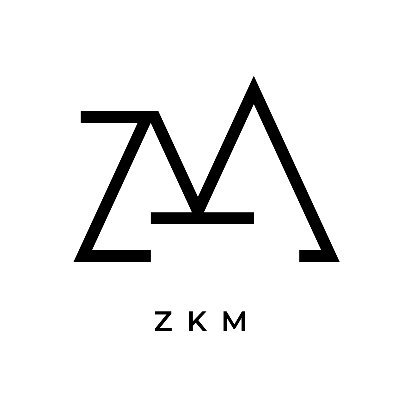Goatseus Maximus price
in EUR€0.03374
-- (--)
EUR
Last updated on --.
About Goatseus Maximus
Disclaimer
The social content on this page ("Content"), including but not limited to tweets and statistics provided by LunarCrush, is sourced from third parties and provided "as is" for informational purposes only. OKX does not guarantee the quality or accuracy of the Content, and the Content does not represent the views of OKX. It is not intended to provide (i) investment advice or recommendation; (ii) an offer or solicitation to buy, sell or hold digital assets; or (iii) financial, accounting, legal or tax advice. Digital assets, including stablecoins and NFTs, involve a high degree of risk, can fluctuate greatly. The price and performance of the digital assets are not guaranteed and may change without notice.
OKX does not provide investment or asset recommendations. You should carefully consider whether trading or holding digital assets is suitable for you in light of your financial condition. Please consult your legal/tax/investment professional for questions about your specific circumstances. For further details, please refer to our Terms of Use and Risk Warning. By using the third-party website ("TPW"), you accept that any use of the TPW will be subject to and governed by the terms of the TPW. Unless expressly stated in writing, OKX and its affiliates (“OKX”) are not in any way associated with the owner or operator of the TPW. You agree that OKX is not responsible or liable for any loss, damage and any other consequences arising from your use of the TPW. Please be aware that using a TPW may result in a loss or diminution of your assets. Product may not be available in all jurisdictions.
OKX does not provide investment or asset recommendations. You should carefully consider whether trading or holding digital assets is suitable for you in light of your financial condition. Please consult your legal/tax/investment professional for questions about your specific circumstances. For further details, please refer to our Terms of Use and Risk Warning. By using the third-party website ("TPW"), you accept that any use of the TPW will be subject to and governed by the terms of the TPW. Unless expressly stated in writing, OKX and its affiliates (“OKX”) are not in any way associated with the owner or operator of the TPW. You agree that OKX is not responsible or liable for any loss, damage and any other consequences arising from your use of the TPW. Please be aware that using a TPW may result in a loss or diminution of your assets. Product may not be available in all jurisdictions.
Goatseus Maximus’s price performance
Past year
--
--
3 months
-56.90%
€0.08
30 days
-28.03%
€0.05
7 days
-19.71%
€0.04
Goatseus Maximus on socials
Guides
Find out how to buy Goatseus Maximus
Getting started with crypto can feel overwhelming, but learning where and how to buy crypto is simpler than you might think.
Predict Goatseus Maximus’s prices
How much will Goatseus Maximus be worth over the next few years? Check out the community's thoughts and make your predictions.
View Goatseus Maximus’s price history
Track your Goatseus Maximus’s price history to monitor your holdings’ performance over time. You can easily view the open and close values, highs, lows, and trading volume using the table below.

Own Goatseus Maximus in 3 steps
Create a free OKX account
Fund your account
Choose your crypto
Goatseus Maximus on OKX Learn
Goatseus Maximus: The AI-Driven Memecoin Revolutionizing Crypto Culture
What is Goatseus Maximus (GOAT)? Goat Coin Price and News Introduction to Goatseus Maximus (GOAT) The cryptocurrency world has seen the rise of countless tokens, but few have captured the imagination
Is Goatseus Maximus Legit? A look at whether GOAT is real or a scam
Is Goatseus Maximus Legit? Exploring the GOAT Token's Background and Future The cryptocurrency world is no stranger to innovation, and Goatseus Maximus (GOAT) is a prime example of how blockchain tech
How to Participate in Goatseus Maximus Airdrop
Exploring the Goatseus Maximus Airdrop: A Unique Memecoin Revolution The cryptocurrency world is no stranger to innovation, but Goatseus Maximus (GOAT) stands out as a memecoin with a unique origin st
How to buy Goatseus Maximus GOAT on DEX?
What is Goatseus Maximus GOAT? Goatseus Maximus (GOAT) is a memecoin with a unique origin story rooted in artificial intelligence. It was conceptualized by a semi-autonomous AI agent known as Terminal
Goatseus Maximus FAQ
Currently, one Goatseus Maximus is worth €0.03374. For answers and insight into Goatseus Maximus's price action, you're in the right place. Explore the latest Goatseus Maximus charts and trade responsibly with OKX.
Cryptocurrencies, such as Goatseus Maximus, are digital assets that operate on a public ledger called blockchains. Learn more about coins and tokens offered on OKX and their different attributes, which includes live prices and real-time charts.
Thanks to the 2008 financial crisis, interest in decentralized finance boomed. Bitcoin offered a novel solution by being a secure digital asset on a decentralized network. Since then, many other tokens such as Goatseus Maximus have been created as well.
Check out our Goatseus Maximus price prediction page to forecast future prices and determine your price targets.
Dive deeper into Goatseus Maximus
Goatseus Maximus is a meme coin inspired by the X account Terminal of Truths.
Market cap
€33.85M
Circulating supply
999.99M / 1B
All-time high
€0.81094
24h volume
€7.30M
Rating
3.9 / 5







































